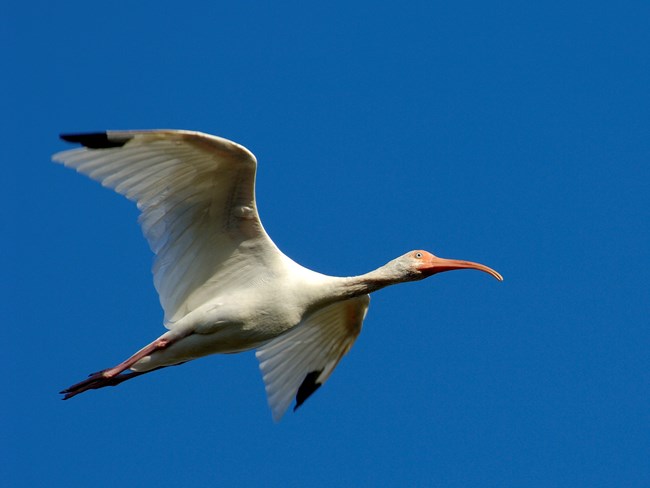
Courtesy- Ralph Arwood Where can I see one? Behavior Nesting colonies could include thousands of birds; imagine the volume of "urnk, urnk" calls resonating from a gathering of that size! Dad is the first to arrive at the breeding grounds and will point its bill towards the sky to attract a mate. Once found, the male and female will build the nest together; the male will deliver the construction supplies (sticks, leaves, and other plant material) to the female who will build a platform nest. Mom will lay 2-5 eggs and both parents will take turns incubating the eggs. Until the chicks fledge at six weeks old, ibis parents will regurgitate food for their offspring. What do they look like? |
Last updated: April 14, 2015
